GeForce RTX 2060 vs GTX 1660 Ti: Which graphics card should you buy?
Comparing two cards based on Nvida's Turing GPU architecture.
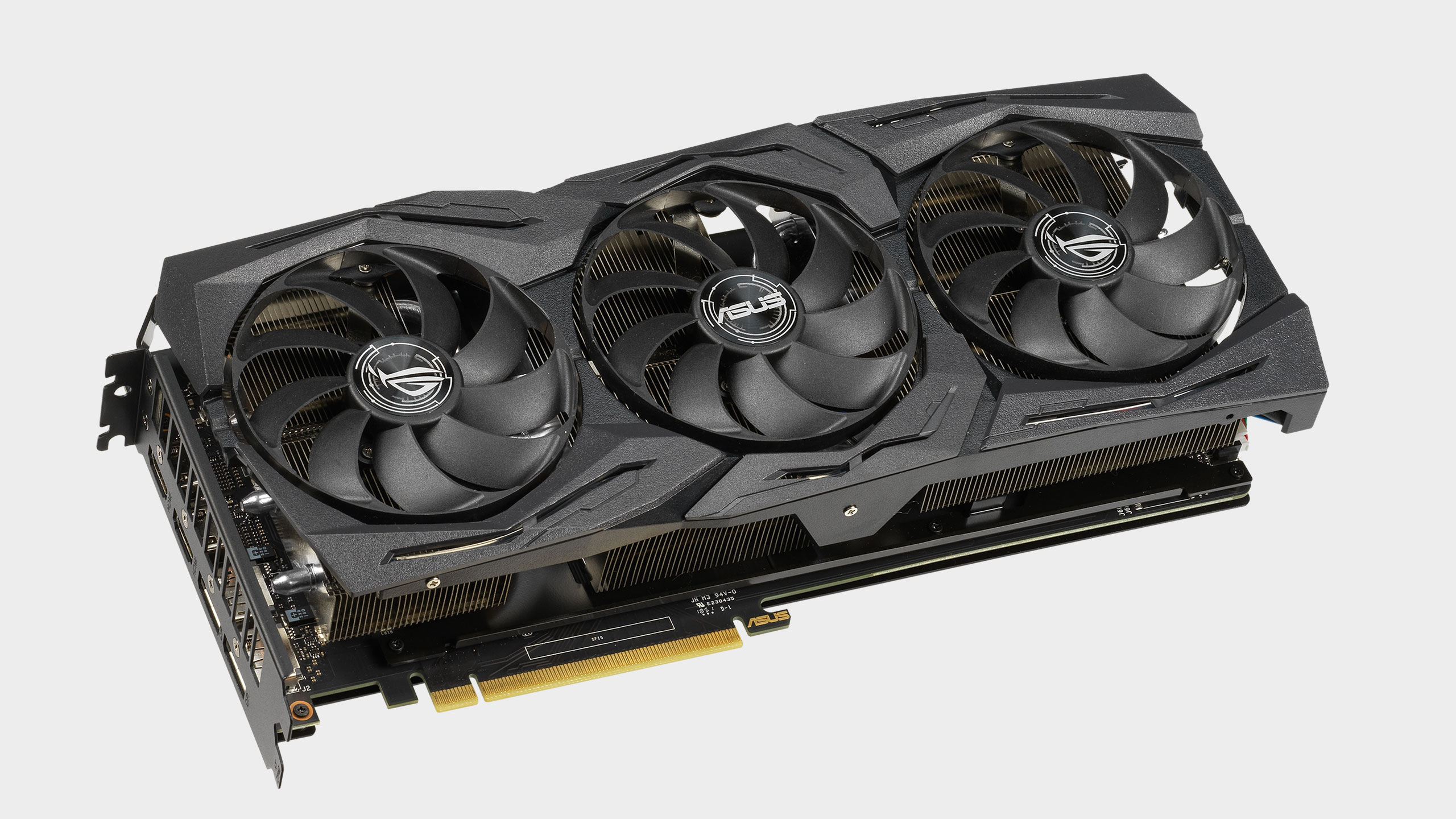
Nvidia initially may have been a bit disillusioned at what kind of premium gamers would be willing to pay for features that are not yet widely adopted, hence why sales of its GeForce RTX 2080 Ti, 2080, and 2070 graphics cards have not met the company's expectations, as it candidly admitted recently. But then came along the GeForce RTX 2060, a more affordable entry into the world of real-time ray tracing and Deep Learning Super Sampling (DLSS). For gamers in need of an upgrade, the GeForce RTX 2060 is one of the best graphics cards to consider, and is a clear winner over the similarly priced GeForce GTX 1070.
Now comes along the GeForce GTX 1660 Ti, however, and suddenly the choice is a bit murkier for anyone with a few hundred bucks to spend on a graphics card. It doesn't boast the same bells and whistles as Nvidia's RTX cards, but it does trounce the previous generation GeForce GTX 1060, and does so at a palatable price.
Judged on cost alone, the GeForce GTX 1660 Ti is the clear choice—it's around $70 cheaper. As is often the case, though, there are more things to consider. The question isn't which card is less expensive, but rather are you better off buying the GTX 1660 Ti or should you spend a bit extra on the RTX 2060? Let's get to it.
RTX vs GTX
Shakespeare once wrote "a rose by any other name would smell as sweet," but even though both the RTX 2060 and GTX 1660 Ti are powered by Nvidia's latest generation Turing GPU architecture, the RTX and GTX nomenclature matters.
All GeForce RTX cards support real-time ray tracing and DLSS processing, whereas the GTX 1660 Ti lacks the necessary RT and Tensor cores for those things. It's not clear if they're absent altogether or somehow disabled, but regardless the takeaway is that the GTX part can't do the same things as RTX cards can.
Right now this doesn't matter a whole bunch. Battlefield 5 and Metro Exodus are the only games to support both features, so it's not as though RTX gamers are dancing in a field of advanced visual effects and everyone else is missing out on the fun. We expect this to improve as the year goes on, but for now, RTX is largely a promise of things to come.
Technically, they're different
Though both cards are based on Turing and are "60" parts (2060 and 1660), there is more that separates the GeForce RTX 2060 and GTX 1660 Ti than RT and Tensor cores alone.
The GeForce RTX 2060 is the burlier card. Here is a rundown of the pertinent specs:
- Stream processors (CUDA cores): 1920
- ROPs: 48
- Tensor cores: 240
- RT cores: 30
- Base clock: 1365MHz
- Boost clock: 1680MHz
- Memory: 6GB GDDR6 at 14Gbps
- Memory interface: 192-bit
- Memory bandwidth: 336GB/s
- Single-precision performance: 6.5TFLOPs
And here is a look at the specs for the GeForce GTX 1660 Ti:
- Stream processors (CUDA cores): 1536
- ROPs: 48
- Tensor cores: N/A
- RT cores: N/A
- Base clock: 1500MHz
- Boost clock: 1770MHz
- Memory: 6GB GDDR5 at 12Gbps
- Memory interface: 192-bit
- Memory bandwidth: 288GB/s
- Single-precision performance: 5.4TFLOPs
The GTX 1660 Ti has fewer CUDA cores and slower memory, resulting in lower memory bandwidth. We haven't fully explored overclocking this model, but in the early going, we've been able to hit around 15Gbps, versus close to 16Gbps on some RTX cards.
Performance
How these cards actually perform is what it all boils down to. As expected, the RTX 2060 is the faster card, as it should be due to the additional CUDA cores and faster memory. Here are the overall performance breakdowns for graphics cards at various resolutions and settings.
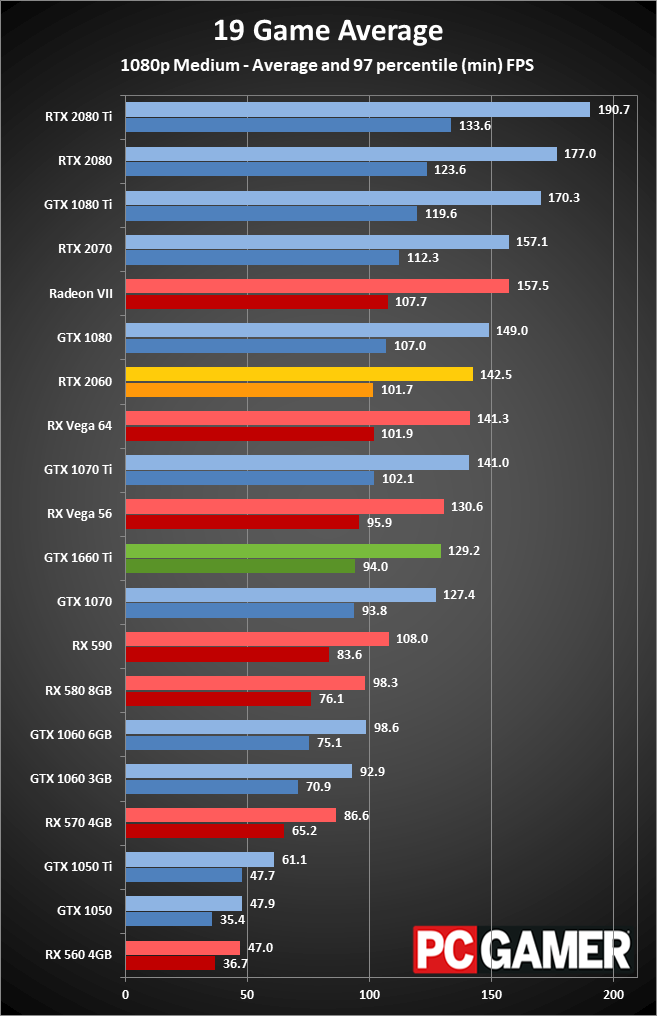
Swipe left/right for additional charts
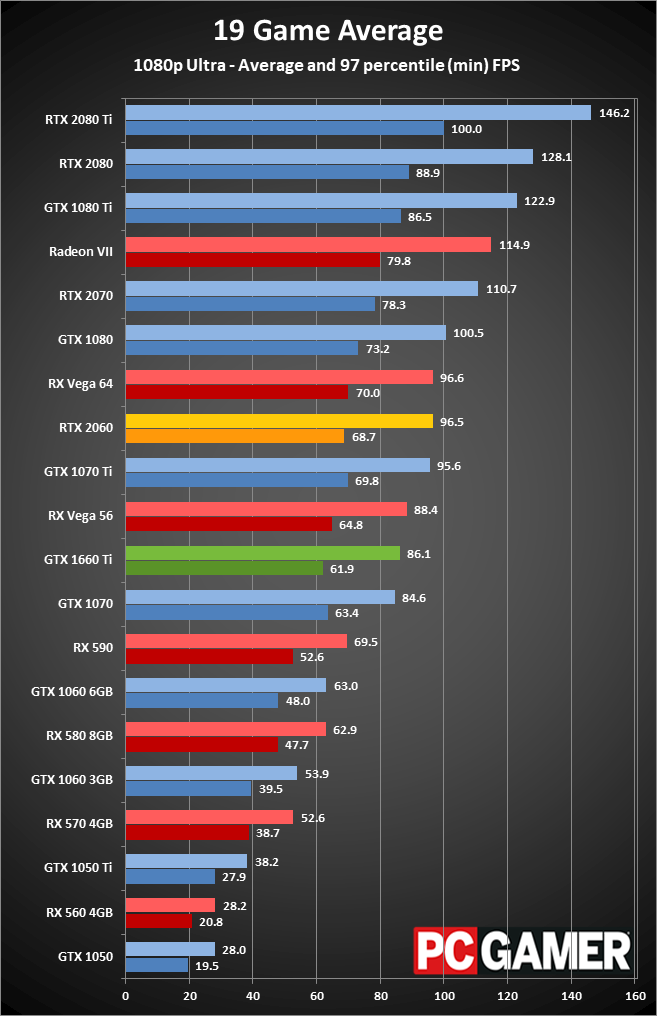
Swipe left/right for additional charts
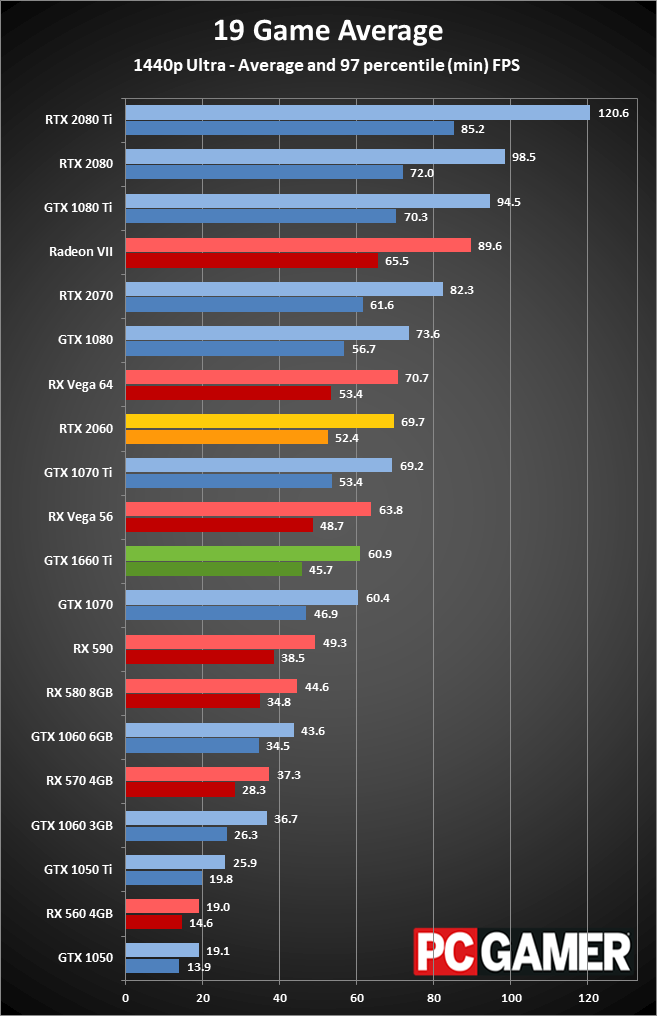
Swipe left/right for additional charts
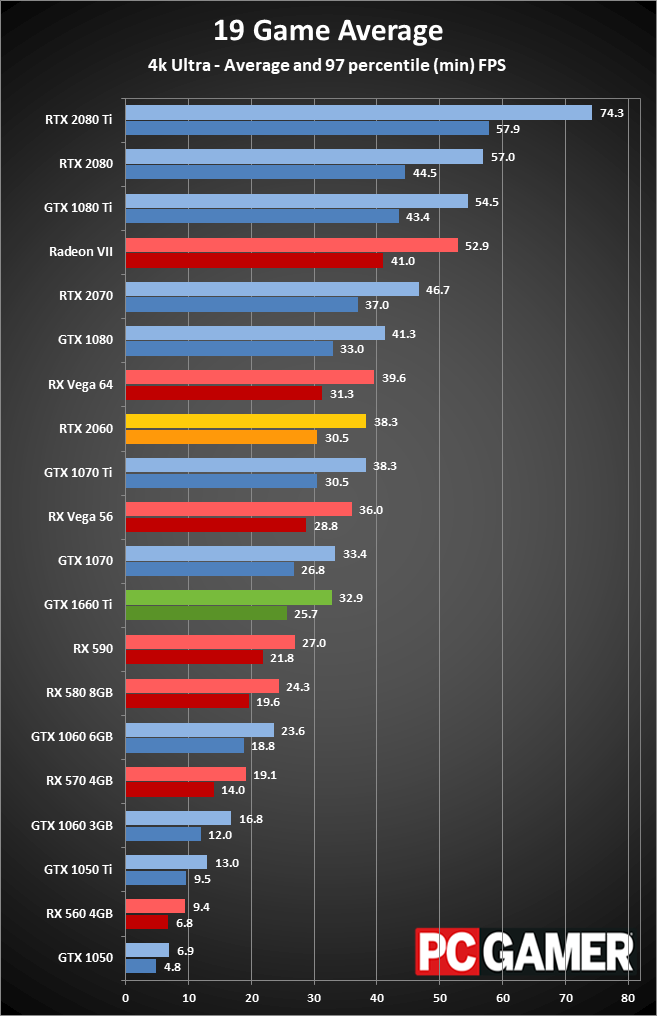
Swipe left/right for additional charts
At 1080p, both cards zip along well above 60 frames per second in most games at Medium and Ultra quality settings. That's more of a feat for the GTX 1660 Ti, which slightly outpaces the previous generation GTX 1070. The RTX 2060, meanwhile, is more on par with a GTX 1070 Ti.
Where we start to see some meaningful separation is when cranking up the resolution to 1440p at Ultra settings. That's often a bit much for midrange GPUs like the GTX 1660 Ti and other sub-$300 graphics cards in general. Sure, our 19-game average shows the GTX 1660 Ti cruising along pleasantly at 61fps, but note that half the games we tested fell below 60fps. Games like Anthem, Assassin's Creed Odyssey, Deus Ex, and Metro Exodus sat closer to 40fps for the average fps.
Comparing 4K performance is largely an academic exercise—neither card is equipped to handle games at that resolution, especially at Ultra quality settings. The rankings break down similar to the other charts, but the average fps for both cards is in the 30s, and about half the games fall below 30fps on the 1660 Ti.
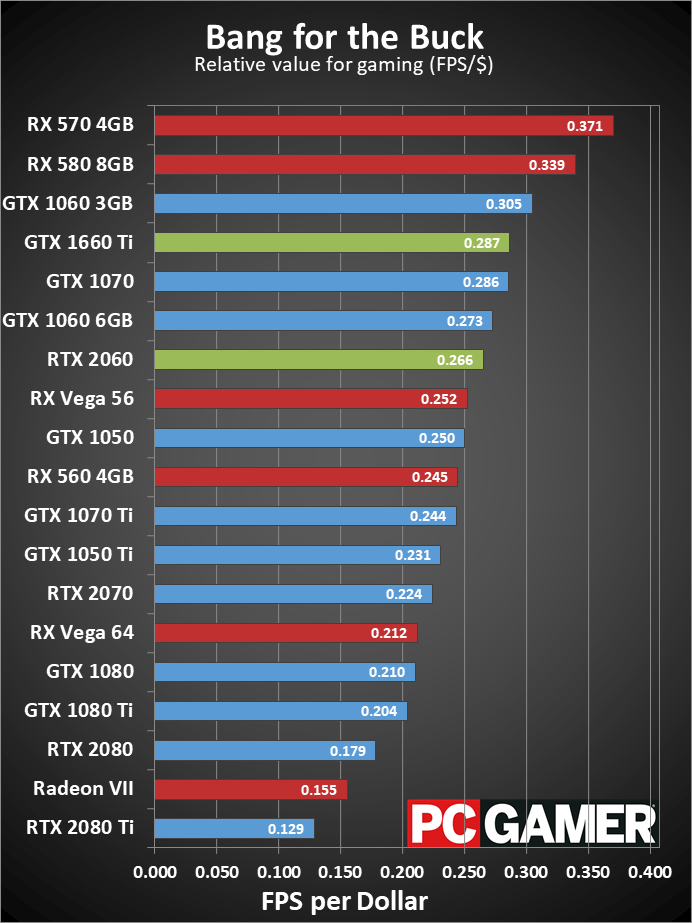
Swipe left/right for additional charts
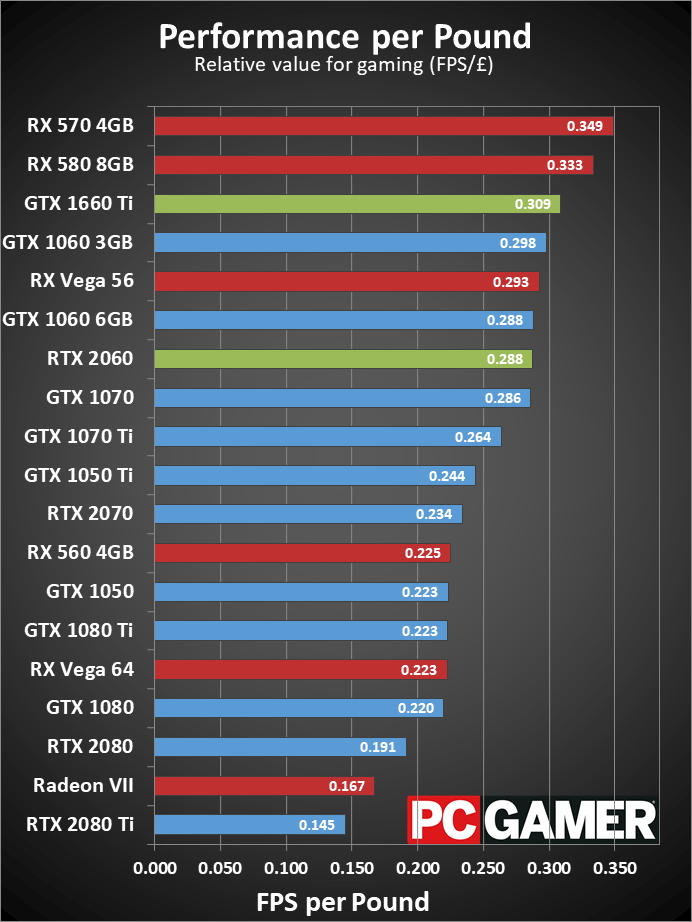
Swipe left/right for additional charts
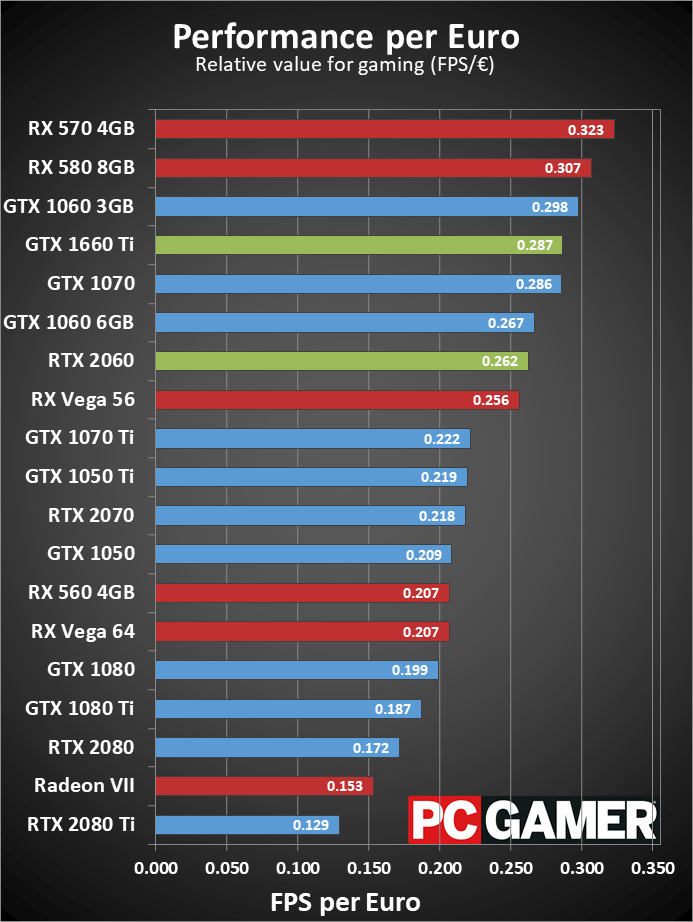
Swipe left/right for additional charts

Swipe left/right for additional charts
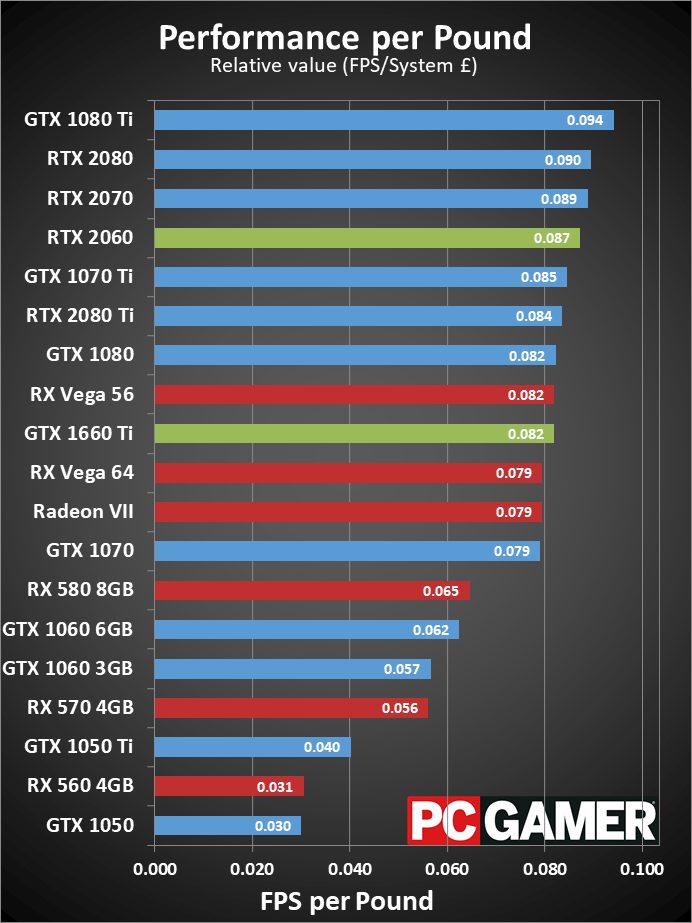
Swipe left/right for additional charts
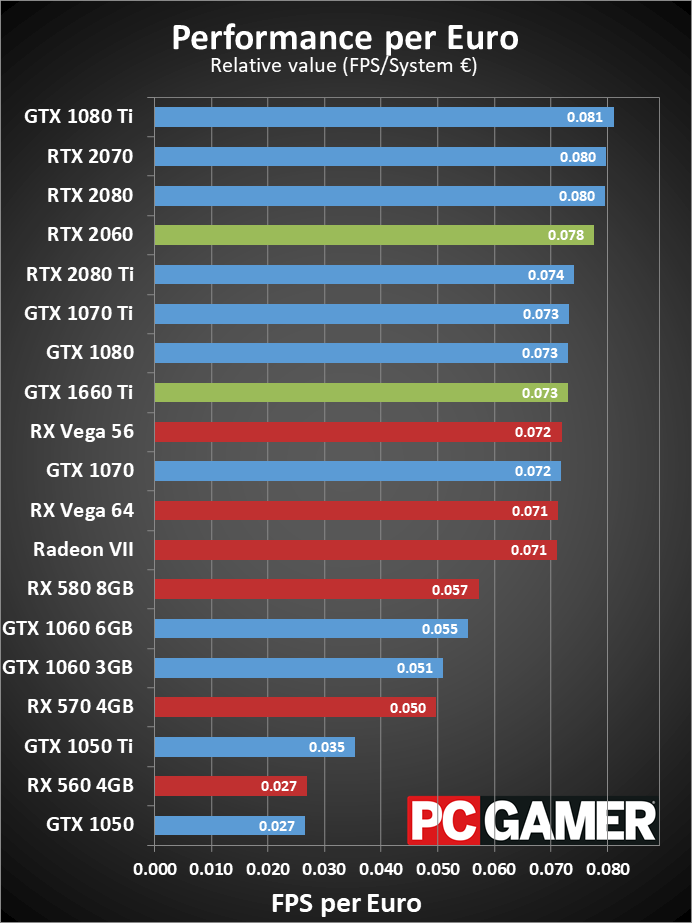
Swipe left/right for additional charts
Price and value
At $279, the GTX 1660 Ti is the only Turing-based card to drop below the $300 mark. The value proposition is pretty high, especially when you consider that the GTX 1070 launched at $379. The GTX 1660 Ti performs about the same, with a launch price that is $100 cheaper.
The RTX 2060, meanwhile, starts at $349, unless you can catch a model with a mail-in-rebate. It's the least expensive RTX card available, though still $70 more expensive than a GTX 1660 Ti. The higher price buys you more graphics muscle, real-time ray tracing and DLSS support, and in many case a choice between Anthem or Battlefield 5 tossed in for free.
If you're looking at strict fps per dollar (or pound, Euro, etc.) spent, the GTX 1660 Ti ends up being a slightly better value right now. Look at building a complete midrange PC on the other hand and the RTX 2060 (or potentially even faster and more expensive cards) rise to the top. There's no single answer as to how much of a factor price should be, however, so the above charts are provided more as a guide than a definitive statement.
Final word
So, which is ultimately the better buy? The GTX 1660 Ti is the Turing card many gamers have been waiting for, and Nvidia finally delivered it. We have no hesitation in recommending it if your GPU budget simply can't extend past $300.
If it can, though, the RTX 2060 is about 10-15 percent faster on average and sometimes around 20 percent, while costing 25 percent more, and it has RTX features to boot. Granted, a $70 price difference is nothing to sneeze at, but if you can swing it, those additional funds are not being wasted on features that are hardly used right now—for the most part, you're paying for more performance, with RTX features being a bonus.
It makes more sense to pick the RTX 2060 over the GTX 1660 Ti if building a new PC, as opposed to just upgrading your GPU alone. For example, if your total build costs $780 with an RTX 2060 vs $700 with a GTX 1660 Ti, you're looking at around an 11 percent increase in cost for a higher-end card that will still be 15-20 percent faster.
Bottom line: there is no clear winner here, but if you can swing it, the GeForce RTX 2060 is still the best upper midrange card (or lower high-end card) that we have seen since the GeForce GTX 1070 Ti. This is especially true if you plan to play at 1440p. However, if you plan to only play at 1080p and/or need to keep the GPU budget under $300, the GeForce GTX 1660 Ti is a very close second.
The biggest gaming news, reviews and hardware deals
Keep up to date with the most important stories and the best deals, as picked by the PC Gamer team.
Paul has been playing PC games and raking his knuckles on computer hardware since the Commodore 64. He does not have any tattoos, but thinks it would be cool to get one that reads LOAD"*",8,1. In his off time, he rides motorcycles and wrestles alligators (only one of those is true).


